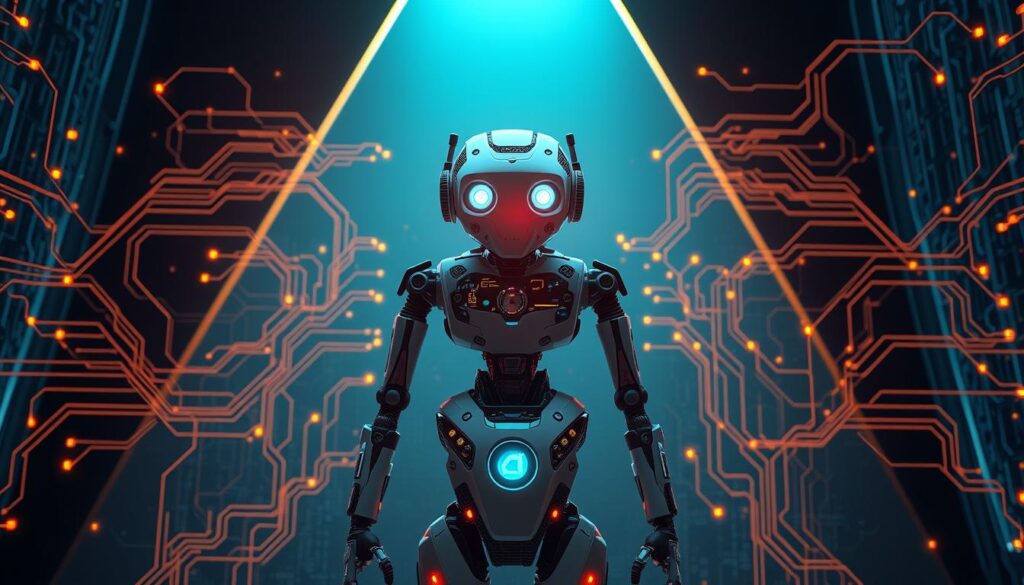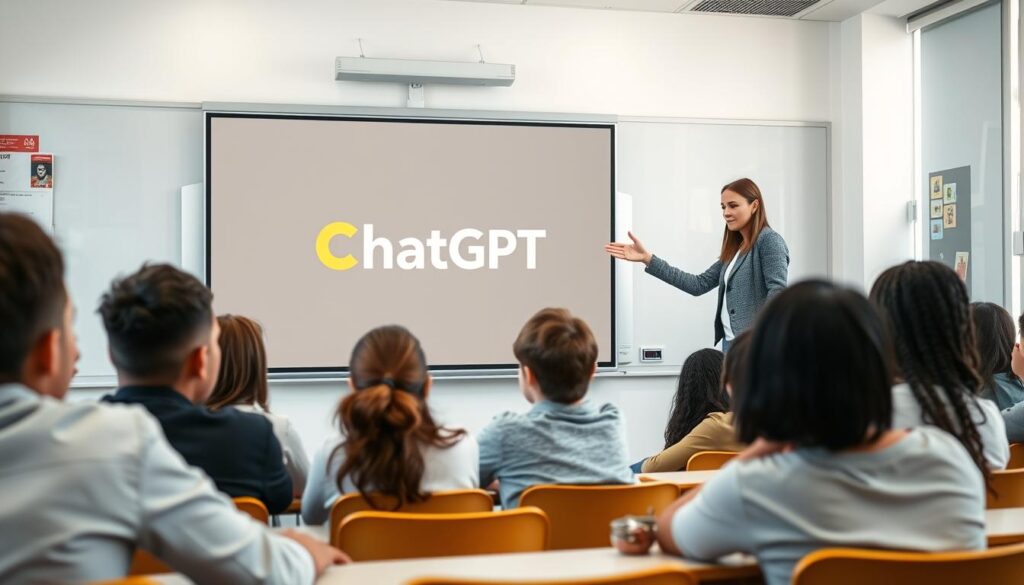Artificial intelligence has revolutionized how we interact with technology, and ChatGPT stands at the forefront of this transformation. This AI-powered chatbot has become a game-changer for millions of users worldwide, offering versatile solutions for everyday tasks.
From drafting emails to generating creative content, ChatGPT simplifies complex processes. Its ability to produce human-like text makes it a valuable tool for professionals, students, and creators alike. With over 100 million active users and a booming $2 billion annual revenue, its impact is undeniable.
Industries like education, healthcare, and business are leveraging its capabilities to enhance productivity and innovation. This guide dives into its practical applications while addressing ethical considerations to ensure responsible use.
Key Takeaways
- ChatGPT is an AI-driven chatbot transforming multiple sectors.
- It generates human-like text for essays, code, and creative projects.
- Over 100 million active users rely on its capabilities.
- Applications span education, business, healthcare, and daily life.
- Ethical considerations are crucial for responsible usage.
Introduction to ChatGPT
The rise of AI tools has reshaped digital interactions, with ChatGPT leading the charge. This advanced language model, developed by OpenAI, has become a cornerstone in the AI revolution. Its ability to generate human-like text has made it a go-to resource for millions of users worldwide.

OpenAI, founded in 2015 by Sam Altman, Elon Musk, and a group of Silicon Valley investors, has been at the forefront of AI research. Microsoft’s $13 billion investment and its integration with Azure cloud infrastructure have further solidified ChatGPT’s position as a cutting-edge tool. With features like the $20/month Copilot integration, it’s accessible to a wide audience.
Key Milestones and Challenges
Launched in November 2022, ChatGPT reached 1 million users in just five days, showcasing its rapid adoption. However, its journey hasn’t been without hurdles. In 2023, Italy temporarily banned the platform over privacy concerns, prompting OpenAI to update its compliance with EU GDPR regulations.
Leadership changes also marked 2023, with Sam Altman reinstated as CEO after a board controversy. These developments highlight the dynamic nature of the AI industry and the importance of ethical considerations in its growth.
How ChatGPT Works
Behind ChatGPT’s impressive capabilities lies a sophisticated blend of technology and training. This AI-driven tool relies on a multi-stage process to deliver accurate and human-like responses. Its ability to engage in meaningful conversations stems from extensive research and development.

The Technology Behind ChatGPT
ChatGPT is built on a foundation of natural language processing (NLP) and machine learning. It was trained on over 300 billion words from books, articles, and code. This vast dataset enables it to understand and generate content across diverse topics.
Human trainers played a crucial role in refining its responses. They rated over 1 million responses to improve accuracy and relevance. This process, known as Reinforcement Learning from Human Feedback (RLHF), ensures the model aligns with user expectations.
Training and Learning Process
The training process involves three key stages: pretraining, supervised fine-tuning, and RLHF. Pretraining familiarizes the model with language patterns, while fine-tuning tailors it for specific tasks. RLHF refines its ability to provide contextually appropriate answers.
Continuous learning is another critical aspect. Feedback from users, such as upvotes and downvotes, helps improve its responses over time. This ensures the model evolves to meet changing needs.
Safety protocols are also in place. Content filters block 15% of harmful queries, ensuring responsible usage. Additionally, the free version has a knowledge cutoff of April 2023, while the Plus version offers real-time web access.
Customization is another standout feature. Users can create specialized GPTs, with over 3 million available in the GPT Store. This flexibility makes it a versatile tool for various applications.
What is ChatGPT Used For?
ChatGPT has become an essential part of modern workflows, offering solutions that streamline tasks across industries. Its versatility makes it a valuable tool for both personal and professional use. From simplifying daily routines to transforming entire sectors, its applications are vast and impactful.

Everyday Applications
In daily life, this AI-powered assistant can draft emails, create shopping lists, and even help with meal planning. It’s like having a personal assistant at your fingertips. Students use it to brainstorm ideas, while professionals rely on it for quick research and content generation.
For creative projects, it’s a game-changer. Writers and artists use it to overcome creative blocks and generate fresh ideas. Its ability to produce human-like text makes it a trusted tool for crafting engaging stories or social media posts.
Industry-Specific Uses
Industries are leveraging its capabilities to boost efficiency and innovation. Here’s how:
- Healthcare: A JAMA study found its symptom checker achieves 85% accuracy, aiding doctors and patients alike.
- Finance: It analyzes SEC filings and summarizes earnings reports, saving time for analysts.
- Real Estate: Integrated with platforms like Zillow, it automates property descriptions, enhancing listings.
- Manufacturing: It predicts maintenance schedules, reducing downtime and costs.
Case studies highlight its impact. For example, Coca-Cola used AI-generated ad scripts, resulting in a 34% increase in click-through rates. Additionally, 92% of Fortune 500 companies now rely on it for various tasks, such as drafting legal documents, which saves attorneys an average of six hours per week.
| Industry | Application | Impact |
|---|---|---|
| Healthcare | Symptom Checker | 85% Accuracy |
| Finance | SEC Filing Analysis | Time Savings |
| Real Estate | Property Descriptions | Enhanced Listings |
| Manufacturing | Predictive Maintenance | Reduced Downtime |
These examples showcase how ChatGPT is reshaping workflows across sectors. Its ability to adapt to diverse needs makes it a cornerstone of modern innovation.
ChatGPT in Education
Education is evolving with the integration of advanced AI tools like ChatGPT. This technology is transforming the way students learn and teachers instruct. From simplifying research to enhancing creativity, its applications are vast and impactful.

Assisting Students and Teachers
Students are leveraging ChatGPT for brainstorming ideas, drafting essays, and understanding complex topics. It’s a powerful tool for improving writing skills and organizing thoughts. Teachers, on the other hand, use it to create lesson plans and generate quizzes, saving valuable time.
Institutions like MIT are pioneering AI-enhanced learning initiatives. These programs focus on developing critical thinking rather than rote memorization. By integrating AI, educators aim to prepare students for a technology-driven future.
Ethical Considerations in Academia
While ChatGPT offers numerous benefits, ethical concerns must be addressed. Proper attribution of AI-generated content is crucial to maintain academic integrity. Tools like GPTZero, with an 85% accuracy rate, help detect AI-generated text, ensuring fairness in evaluations.
Proctoring software like Respondus is also being used to prevent cheating. Additionally, 68% of educators support AI literacy courses to teach students how to use these tools responsibly.
| Ethical Issue | Solution | Impact |
|---|---|---|
| Cheating Prevention | Proctoring Software | Ensures Fair Evaluations |
| Citation Ethics | Proper Attribution | Maintains Academic Integrity |
| Skill Development | Critical Thinking Focus | Prepares for Future Challenges |
By addressing these ethical considerations, educators can ensure that AI tools like ChatGPT are used in a responsible and beneficial way. This balance between innovation and integrity is key to shaping the future of education.
ChatGPT in Business
Businesses are embracing AI to streamline operations and enhance customer experiences. This technology is transforming how companies interact with their audiences and manage workflows. From improving customer service to boosting marketing efforts, its applications are reshaping the corporate landscape.

Customer Service and Support
AI-powered tools are revolutionizing customer service. They handle inquiries efficiently, reducing wait times and improving satisfaction. For instance, companies can deploy chatbots to answer FAQs, resolve issues, and even process orders. This not only saves time but also ensures consistent support across all channels.
Integrating AI into customer service also allows businesses to analyze feedback. This helps identify trends and improve products or services. With real-time data, companies can make informed decisions to enhance the customer experience.
Content Creation and Marketing
In the realm of marketing, AI is a game-changer. It generates content at scale, from social media posts to ad copy. For example, it can produce 100 social posts in an hour, significantly boosting output. Tools like HubSpot’s content assistant further enhance efficiency, increasing productivity by 40%.
Here are some key applications:
- Ad Copy: A/B test variations in minutes to identify the most effective messaging.
- SEO Content: Integrate with platforms like Semrush for keyword optimization and improved search rankings.
- Video Scripts: Create outlines for TikTok or YouTube with trending hooks to engage audiences.
- Analytics: Predict conversion rates for headlines, ensuring maximum impact.
Case studies highlight its effectiveness. Nestlé’s AI campaign generated over 12,000 assets, showcasing its potential for large-scale projects. By leveraging AI, businesses can focus on strategy while the tool handles the heavy lifting of writing and design.
Whether it’s enhancing websites or crafting compelling campaigns, AI is proving to be an invaluable asset. Its ability to adapt to diverse needs makes it a cornerstone of modern business innovation.
ChatGPT in Creative Industries
The creative world is experiencing a seismic shift, thanks to advanced AI tools reshaping artistic processes. From writing to music and visual arts, these technologies are becoming an essential part of modern creativity. They offer innovative solutions that enhance productivity and inspire new ideas.

Writing and Content Generation
AI-powered tools are transforming how writers approach their craft. They assist with brainstorming, drafting, and editing, making the creative process more efficient. For example, writers can generate metaphors, refine rhyme schemes, or even create entire story outlines in minutes.
These tools are particularly useful for overcoming writer’s block. By providing fresh perspectives, they help creators produce engaging content. As one author noted,
“AI doesn’t replace creativity; it amplifies it by offering new ways to explore ideas.”
Music and Art Creation
In music, AI is revolutionizing composition. It can generate MIDI files in 15 different styles, from classical to electronic. Musicians use these files to create chord progressions or experiment with new genres. This way of working saves time and opens up endless creative possibilities.
Visual arts are also benefiting from AI integration. Tools like DALL-E 3 can produce one image every 20 seconds, while Stable Diffusion allows for API-based customization. Artists can now bring their visions to life faster than ever before.
| Creative Field | AI Application | Impact |
|---|---|---|
| Writing | Metaphor Generation | Enhances Creativity |
| Music | MIDI File Creation | Expands Genre Exploration |
| Visual Arts | Image Generation | Speeds Up Production |
However, ethical considerations remain. For instance, an AI-generated “Drake” song was removed from streaming platforms due to copyright concerns. The GRAMMYs have also introduced rules to determine AI content eligibility, ensuring fair recognition for human creators.
By leveraging these tools, creatives can explore new horizons while addressing ethical challenges. For more inspiration, check out these mind-blowing ChatGPT prompts to elevate your creative tasks.
ChatGPT in Technology and Coding
The integration of AI into coding workflows is transforming how developers approach their tasks. From writing code to debugging and optimization, AI-powered tools are becoming essential for modern programming. These advancements not only save time but also enhance the quality of work.

Developers are leveraging AI to streamline complex processes. For instance, it can analyze algorithm complexity, ensuring optimal performance. Security is another area where AI shines, with fixes for OWASP Top 10 vulnerabilities becoming more accessible.
Programming Assistance
AI tools assist developers in writing clean and efficient code. They can generate snippets, suggest improvements, and even convert legacy code like COBOL to Java. This way of working reduces errors and speeds up development cycles.
Cloud integration is another key benefit. For example, AWS Lambda optimization prompts can reduce costs by up to 23%. This makes AI an invaluable asset for businesses looking to maximize efficiency.
Debugging and Code Optimization
Debugging is often a time-consuming task, but AI simplifies it. Tools can identify errors, suggest fixes, and optimize code for better performance. A case study from Spotify highlights this, with backend latency reduced by 40%.
Here are some ways AI is enhancing coding workflows:
- Performance Tuning: Analyze algorithm complexity for optimal results.
- Security: Fix OWASP Top 10 vulnerabilities efficiently.
- Cloud Integration: Optimize AWS Lambda functions to cut costs.
- Legacy Modernization: Convert outdated code to modern languages like Java.
With 61% of developers using AI daily, it’s clear that these tools are reshaping the industry. By automating repetitive tasks, they allow developers to focus on innovation and research.
Benefits of Using ChatGPT
Adopting AI tools like this can significantly enhance workflows while reducing costs. Whether you’re a startup or a large enterprise, the advantages are clear. From boosting efficiency to cutting expenses, it’s a game-changer for modern operations.
Efficiency and Productivity
This tool simplifies tasks, allowing users to focus on high-priority projects. The free version handles up to 15 queries per hour, making it accessible for personal use. For businesses, the Plus version offers advanced features at $20 per month, a fraction of the cost of hiring a development team.
Cost-Effectiveness
Startups can save thousands by using this tool instead of building custom solutions. Enterprises, like banks, report annual savings of up to $2 million. API pricing is also competitive, with costs as low as $0.03 per 1,000 tokens.
For content creation, the savings are substantial. Human writers charge $0.10 per word, while AI costs just $0.001. A marketing agency saved $240,000 annually by integrating this technology into their workflow.

